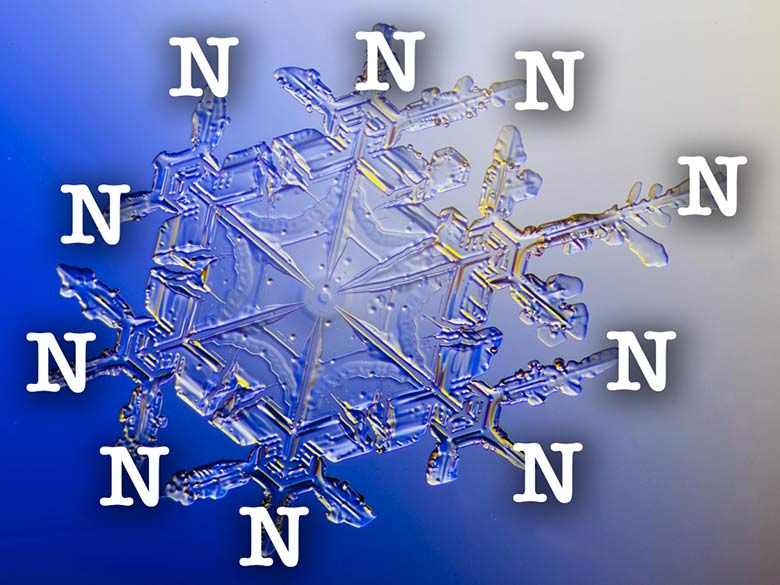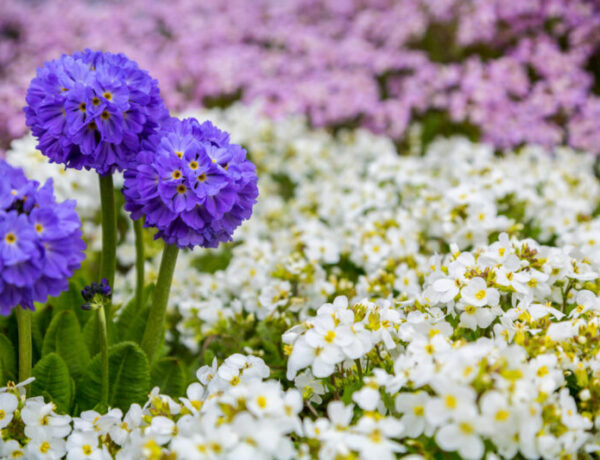Snow does more than brighten the landscape and encourage us to prepare for spring gardening. Snow can yield some great benefits to your soil. How’s that?
Well, you might recall that snow is often called Poor man’s mulch. Come to learn that it’s also known as Poor Man’s Fertilizer.
Is this old wive’s tale stuff?
Truth be told, snow contains nitrogen and other particulates like sulfur, which it casually collects during its 20-minute journey to earth. However so does rain, sleet, hail, and believe it or not, lightning.
While rain and lightning contain more nitrogen than snow, statistics from agricultural studies estimate that as a result of snow and rainfall averages, between 2 to 12 pounds of nitrogen are deposited per acre in the U.S. per year. (Though how scientists measure such things, I haven’t a clue).
[Hello there… I just want you to know that this article was originally published in the Kodiak Daily Mirror, the hometown newspaper for Kodiak, Alaska. You can access the archive page for my past columns, written each week since 1986].
Of the three, snow is the best form of natural nitrogen. Not only does it allow the necessary chemical reactions to take place in the soil (things that happen while we sleep), it also protects micronutrients and bacteria by blanketing the ground.
There is something else that happens when it snows. According to Anchorage garden writer Jeff Lowenfels, “Nitrogen is deposited by the snow and absorbed either into the soil food web residing and active at low temperatures or by plants as a result of nitrogen fixation, a microbial activity which, astonishingly enough, can take place even at low temperatures.”
As we know, a blanket of snow, when the ground is frozen, is like a layer of protective mulch. It insulates and thus protects both the soil and the plants from desiccating winds and damaging freeze-thaw conditions.
But here’s the thing: If the ground is saturated, as it often is in coastal areas like Kodiak, the rain runs off; if the ground is frozen, the snowmelt will also run off and most of the nutrients will not be absorbed. In the spring however, when Mother Earth has thawed and we have a snow, this blanket of snow does two things: It protects newly emerging plants and leaches nutrients like nitrogen slowly, as it melts into the earth.
Like a slow-release vitamin
That said, here is a plug for soil that’s been enriched with compost. It creates what’s called “good tilth.” Soils with good tilth have large pore spaces that act like highways for proper air and water movement. Roots only grow where the soil tilth allows for adequate levels of soil oxygen. In Kodiak, our “butter clay” soil is dense, low in pH and lacking in these pore spaces.
Thus, the soil is unable to hold a healthy supply of water and nutrients. That is, until the soil’s tilth is improved by improving it with organic materials, something that chemical fertilizers can not do.
Spring bulbs such as tulips, crocus, and garlic that need cold temperatures to grow can benefit from a cover of snow which provides moisture and fertilization and prevents frost heave. So if you see your neighbor heaping snow on garden beds planted with bulbs or around newly planted trees, he or she is not crazy.
Besides, we only have to look at a poor salmonberry season and think back to how often this occurs when we have a deep freeze with no snow cover.
When it comes to nitrogen however, more is NOT better. In fact there’s more nitrogen than ever in snow these days, but not everyone is happy about it.
Tim Traver is a science writer living in Woodstock, Vermont, not too far from where Snowflake Bentley spent much of his life photographing snow crystals.
Tim Travers further explains nitrogen in his blog “Northern Woodlands”:
“Nitrogen gas makes up 78 percent of our atmosphere – plants and animals can only use nitrogen, however, when nitrogen gas becomes “fixed.” This occurs when it’s in the usable form of nitrate: when oxygen is bonded with the nitrogen or ammonium, when hydrogen is bonded with the nitrogen.
“Most of this nitrogen fixing is carried out by specialized anaerobic bacteria living cooperatively inside the root nodules of legume plants – peas, beans, and locust trees – and other pioneer species like the speckled alder,” says Tim. “Once it’s fixed, nitrogen is taken up quickly by plants and cycled through the biosphere from air to soil to living organisms and back. As a result, there isn’t much available nitrogen left in soil – it’s too valuable.”
What does he mean by ‘too valuable?’
Well, let me share a little history. WARNING: It’s not pretty.
ln the early years of the 20th century, German scientist Fritz Haber developed synthetic ammonia for use in explosives for the war effort. His invention ended up fueling both the war and a revolution in agriculture: Synthetic nitrogen fertilizer applied to crops boosted their yields to unimaginable levels.
But the development of synthetic nitrogen has come at a price. For example, many studies suggest that too much nitrogen can actually lead to forest decline. And flowers, vegetables and herbs fed a diet of nitrogen fertilizers become weak and watery, succumbing to pests and disease.
In the water, nitrates end up in coastal estuaries where they stimulate growth of algae which create hypoxic (dead) zones such the 8,000 square-mile biological desert of the northern Gulf of Mexico. Did you know that 70 percent of the U.S. coastline is influenced by nitrate enrichment?
So, what to do about nitrogen enrichment?
How do we kick our nitrogen habit?
Whether you are a farmer, a home gardener, or someone simply trying to green up your lawn, we need to back off from chemical inputs and adopt more organic growing methods. I remember walking on a street in Seattle and seeing the following words stenciled in white next to a sidewalk drain: “Everything ends up in the ocean.”
It’s food for thought.
Meanwhile, back to our initial topic of nitrogen in snow, while we patiently wait for warm weather and getting our hands in the soil, let’s be glad for the end of 2020 and the dawn of a New Year!
And one more thing: Some folks will tell you that every cloud has a silver lining. In this case, every spring snow has a nitrogen lining.
Meanwhile, here are 6 things to add to the Garden Job Jar:
- Make your seed lists and/or order seeds.
- Conduct germination tests on old seeds.
- Cover perennials with spruce branches (winter isn’t over yet).
- Save food scraps: Give to friends with chickens or mix with leaves in a secure tote for composting later.
- Rotate houseplants.
- So long as the weather allows: Build, fill, and repair raised beds.
— ++ [+] ++ —
Thank you for joining me here. Have a great week!

++++++++++++++++++
P.S. Did you know that compost is the #1 thing you can do for your garden? Join the waitlist for my next FREE composting mini-class. Check out my Joy of Composting Facebook page. To contact me by email: marion (at) marionowenalaska.com.





No Comments